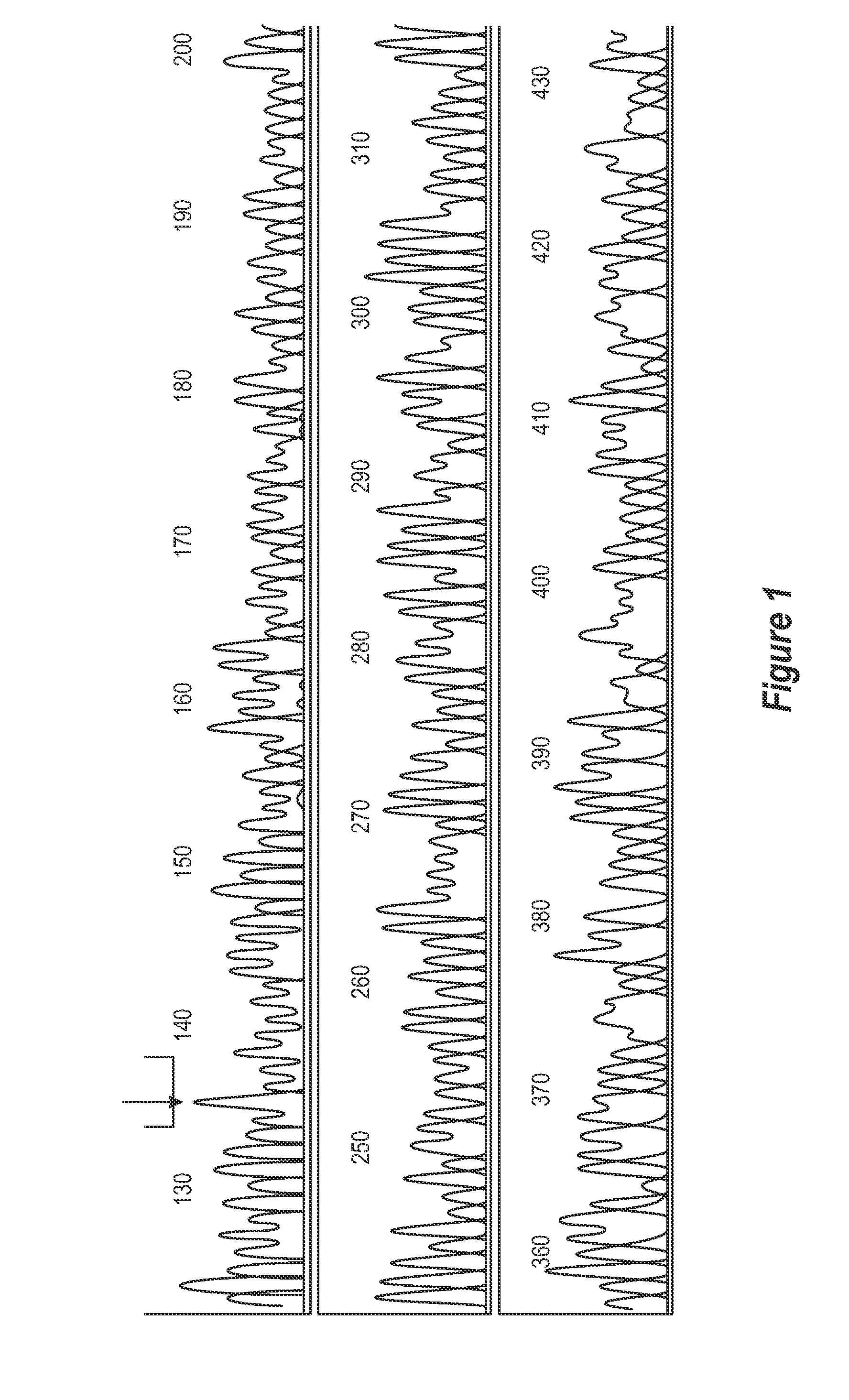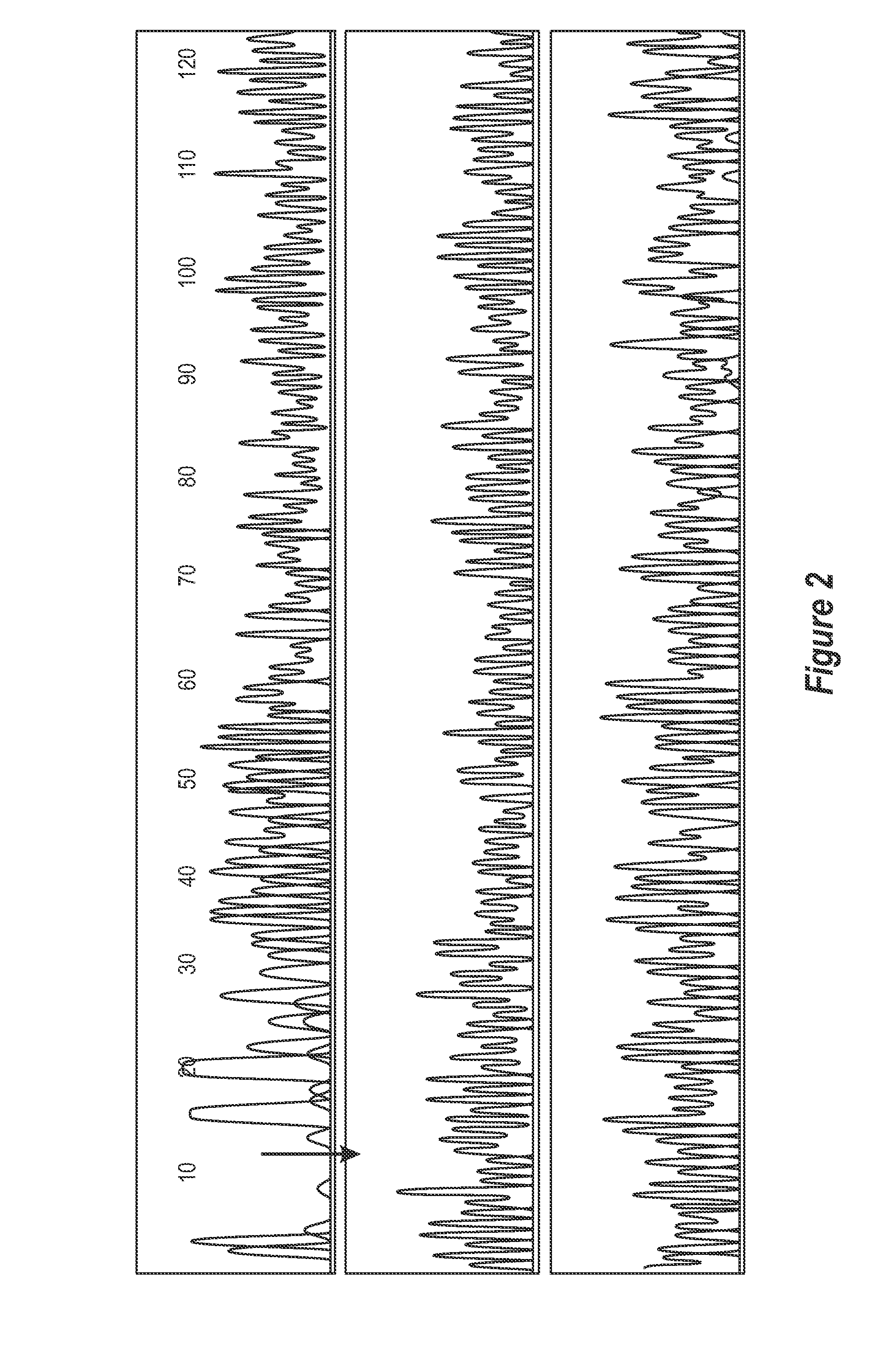Diagnosis and treatment of disease
a technology for skin diseases and diagnosis, applied in the field of diagnosis and treatment of diseases, can solve the problems of increasing the activity of these enzymes, increasing the production rate of sebum, and reducing the adhesion between epithelial cells, and achieve the effect of enhancing the cleavage of adhesion molecules
- Summary
- Abstract
- Description
- Claims
- Application Information
AI Technical Summary
Benefits of technology
Problems solved by technology
Method used
Image
Examples
examples a
Adhesion Protein Polymorphisms
Example A1
Identification of Corneodesmosin (S) Gene Polymorphisms
[0361]Genomic DNA is extracted from whole blood according to standard protocols and stored at 100 ng / ul. One reported exonic polymorphism giving a T to C transition at position +1243 is analysed (Ishihara et al, 1996, Tazi-Ahnini et al, 1999a, 1999b).
[0362]Primers S15 (5′CATTGCATTCCAGCCAGTGG3′) (SEQ ID NO 15) and S16 (5′AACTGGAGCTGCTGCTGAAGGA3′) (SEQ ID NO 16) are used to amplify the polymorphism locus (+1243). PCRs are prepared in bulk and aliquoted to 25 μl volumes comprising 50 mM KCL, 20 mM Tris-HCL, 1.5 mM MgCl2, 200 uM each dNTP, 1.2 M each primer, 1 U of Taq polymerase (Gibco BRL, Paisley, UK) and 200 ng of genomic DNA. Thermocycling conditions are 2 min at 95° C., 28 cycles of 1 min at 95° C., 1 min at 58° C. and 15 s at 72° C. The amplifications are ended by 15 min at 72° C.
[0363]Restriction digests are performed in 20 μl reactions containing 10 μl of PCR products and 2.5 U of Hph...
example a2
Association of Corneodesmosin (S) Gene +1243 Polymorphisms with Atopic Eczema
[0368]In this Example, unless otherwise indicated, amino acid positions in the corneodesmosin sequence are provided with reference to the numbering in GenBank sequence L20815.
[0369]This Example demonstrates that corneodesmosin allele 2, in which the nucleotide residue of corneodesmosin at position +1243 is a T, leading to the presence of a leucine (T) residue at position 394 of the corneodesmosin polypeptide (L20815), is associated with atopic eczema.
[0370]The allelic distribution of +1243 polymorphism is assessed in both the atopic eczema and controls groups (n=154 and 550, respectively), as described above. Both controls and patients are in Hardy Weinberg equilibrium. Table A2.1 shows the observed (A) and the expected (B) values of each genotype in controls and atopic eczema patients groups.
TABLE A2.1Allelic distribution of allele 11, 12 and 22 in control andatopic eczema patient groups.22 (T / T)12 (T / C)11...
example a3
Association of Corneodesmosin (S) Gene +1243 Polymorphisms with Dermatitis
[0374]In this Example, unless otherwise indicated, amino acid positions in the corneodesmosin sequence are provided with reference to the numbering in GenBank sequence L20815.
[0375]This Example demonstrates that comeodesmosin allele 2, in which the nucleotide residue of corneodesmosin at position +1243 is a T, leading to the presence of a leucine (L) residue at position 394 of the corneodesmosin polypeptide (L20815), is associated with dermatitis and might be the cause of the pathogenesis of dermatitis herpetiformis.
[0376]The allelic distribution of the +1243 polymorphism is assessed in both the dermatitis herpetiformis and controls groups (n=50 and 550, respectively), as described above. Both controls and patients are in Hardy Weinberg equilibrium.
TABLE A3.1Allelic distribution of allele 11, 12 and 22 in control anddermatitis herpetiformis groups22 (T / T)12 (T / C)11 (C / C)A) Observed valuesControls150284116Patie...
PUM
| Property | Measurement | Unit |
|---|---|---|
| time | aaaaa | aaaaa |
| diameter | aaaaa | aaaaa |
| Tm | aaaaa | aaaaa |
Abstract
Description
Claims
Application Information
 Login to View More
Login to View More - R&D
- Intellectual Property
- Life Sciences
- Materials
- Tech Scout
- Unparalleled Data Quality
- Higher Quality Content
- 60% Fewer Hallucinations
Browse by: Latest US Patents, China's latest patents, Technical Efficacy Thesaurus, Application Domain, Technology Topic, Popular Technical Reports.
© 2025 PatSnap. All rights reserved.Legal|Privacy policy|Modern Slavery Act Transparency Statement|Sitemap|About US| Contact US: help@patsnap.com



